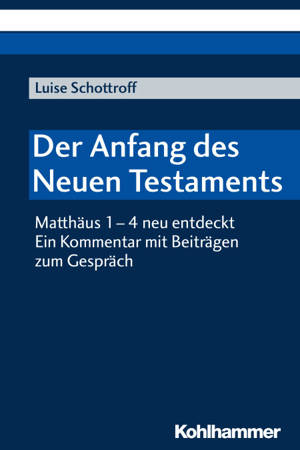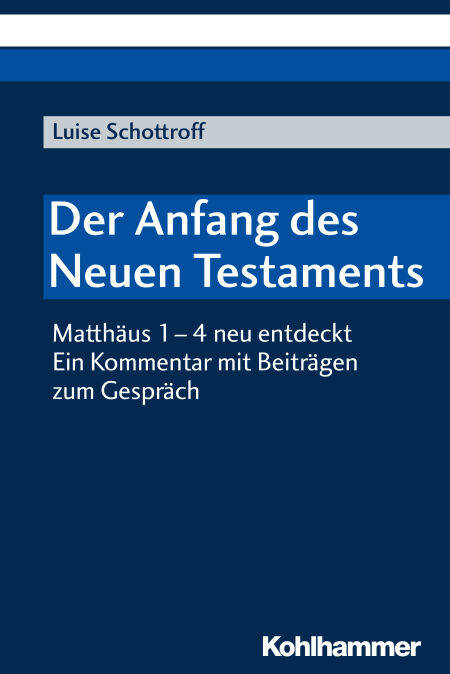
- Afhalen na 1 uur in een winkel met voorraad
- Gratis thuislevering in België vanaf € 30
- Ruim aanbod met 7 miljoen producten
- Afhalen na 1 uur in een winkel met voorraad
- Gratis thuislevering in België vanaf € 30
- Ruim aanbod met 7 miljoen producten
Zoeken
Der Anfang des Neuen Testaments E-BOOK
Matthäus 1-4 neu entdeckt. Ein Kommentar mit Beiträgen zum Gespräch
Luise Schottroff
E-book | Duits
€ 25,99
+ 25 punten
Uitvoering
Omschrijving
In the last year of her life, Luise Schottroff (1934-2015) was working on a commentary on the Gospel of St. Matthew and was able to complete chapters 1-4. These are now regarded not only as a deliberately designed introduction to the Gospel of St. Matthew, but at the same time also as a preface to the entire New Testament. She reads the texts in a surprisingly new way and at many points disputes earlier consensus views, both in scholarly and exegetical terms and in terms of dogma.
To do justice to the challenges of this interpretation, each major section is accompanied here by a meta-commentary prepared by the Heidelberg Working Group on Social-Historical Interpretation of the Bible. This places the commentary in the context of the history of theology and interpretation and initiates a critical discussion.
To do justice to the challenges of this interpretation, each major section is accompanied here by a meta-commentary prepared by the Heidelberg Working Group on Social-Historical Interpretation of the Bible. This places the commentary in the context of the history of theology and interpretation and initiates a critical discussion.
Specificaties
Betrokkenen
- Auteur(s):
- Uitgeverij:
Inhoud
- Aantal bladzijden:
- 287
- Taal:
- Duits
Eigenschappen
- Productcode (EAN):
- 9783170325746
- Verschijningsdatum:
- 8/01/2019
- Uitvoering:
- E-book
- Beveiligd met:
- Digital watermarking
- Formaat:

Alleen bij Standaard Boekhandel
+ 25 punten op je klantenkaart van Standaard Boekhandel
Beoordelingen
We publiceren alleen reviews die voldoen aan de voorwaarden voor reviews. Bekijk onze voorwaarden voor reviews.











